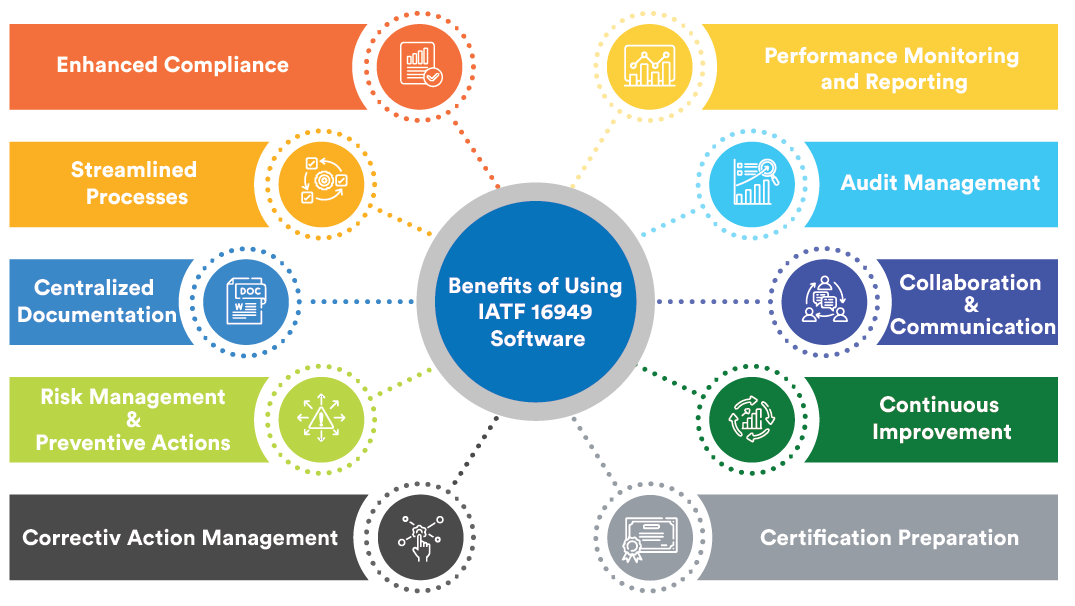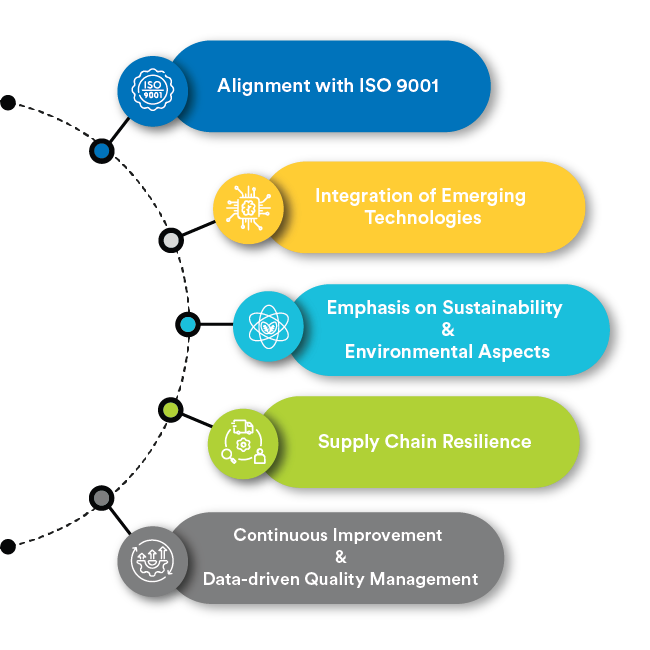In the automotive industry, reliance on suppliers is absolute for the manufacturer and for all other organizations in the supply chain. Suppliers need to have their processes under control and understand their customers’ specific requirements. Suppliers that are especially focused on continuous improvement are sought after.
As a supplier, you can gain a competitive edge by having a certified Quality System in place. IATF 16949 (previously called ISO/TS 16949) applies to any organization active in the automotive/motorcycle supply chain.
IATF 16949, in conjunction with ISO 9001:2015, defines the quality requirements for the design and development, production and, when relevant, installation and service of automotive-related products.
TF 16949 applies to sites of the organization where customer-specified parts, for production and/or service, are manufactured. Supporting functions, whether on-site or remote (such as design centers, corporate headquarters and distribution centers), form part of the site audit as they support the site, but cannot obtain stand-alone certification to IATF 16949.
ComplianceQuest – Enterprise Quality, Compliance and Safety Management Software (QHSE) is an integrated cloud-based IATF 16949 software solution and goes above and beyond the requirements for IATF 16949 while automating your entire quality requirements.
CQ significantly reduces the effort involved in maintaining your IATF 16949 Quality System by making the required processes automated while maintaining full traceability. Imagine the time and money your company can save with an intuitive web-based system, which will replace all the hard copies, and those random Word and Excel files.
CQ was designed from the ground-up to be not only extremely user-friendly at all levels but provide for a very powerful platform to scale from a small company to a large global enterprise. CQ helps you organize your company’s ISO requirements and not only improves productivity but also helps auditors find what they need quickly and effortlessly.


















